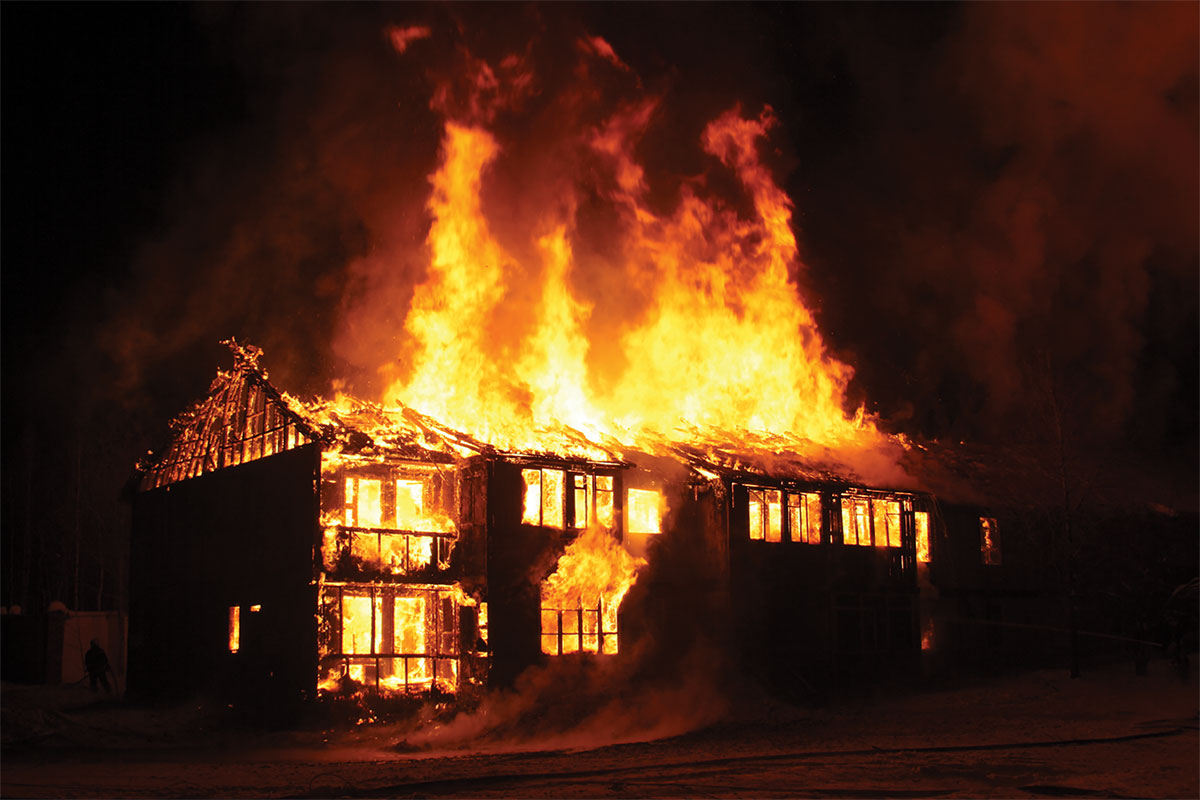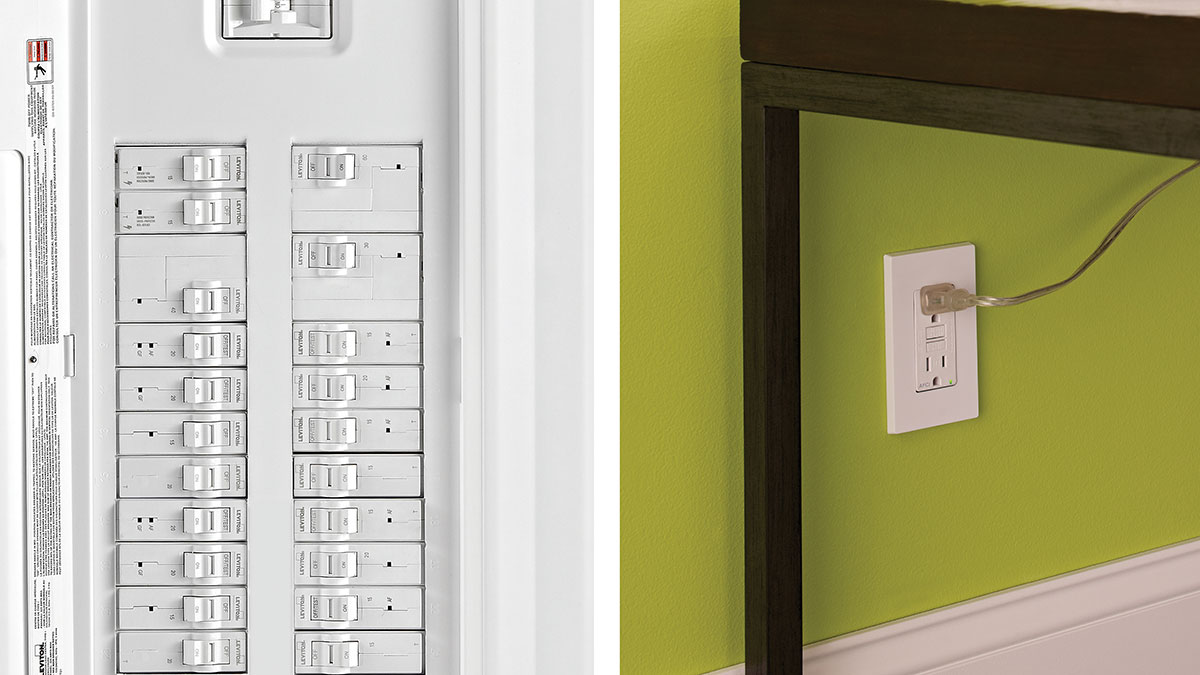by Clive Kimblin, Eaton Cutler-Hammer
It is true that code-making panel 2 has proposed revising 210.12(B) to require “an arc-fault circuit interrupter, combination type, installed to provide protection of the branch circuit.” However, we believe, that it is not true that a change to the existing Code is advisable. The need and benefit has not been substantiated. The reliability with respect to nuisance trip immunity has not been established with adequate operational time in the field. In particular, the existing code is non-exclusionary and already allows for the deployment of these devices. A code change is not necessary.
There is cause for alarm because the change would effectively obsolete the field-proven branch/feeder AFCI and replace it with a combination device which is not even commercially available. Thus even the authors, in their subsection “AFCI performance,”” refer to the future in stating “”As the ‘combination’ AFCI becomes available…”. The existing 210.12(B) code language presently includes both combination AFCIs and branch/feeder AFCIs, and any change to mandate combination AFCIs solely should be based on (1) a proven need for such devices, (2) field experience relative to factors such as unwanted tripping, and (3) consumer acceptance. We believe that it is premature to change the existing non-exclusionary branch-circuit-protection code language for the reasons shown below.
It is true that, as the authors point out, “the branch/feeder AFCI is providing a significant degree of protection on the branch circuit and cords that was not available before.” Indeed, the protection is highly significant. Such commercially available AFCIs provide complete protection to the commonly used branch-circuit installation wire (NM-B plus ground), protection against all arcing faults between two conductors in two-wire cords, protection via ground fault against all arcs to ground of 30 mA and above at any point in the circuit, and significant protection via ground fault against glowing connections. Further, field experience from more than four million installations shows that commercially available branch/feeder AFCIs are not subject to unwanted (nuisance) tripping on the arcs and electronic chopped-waveforms associated with the operation of appliances (for example, vacuum cleaner motor-brushes, switches, heating bimetal-controls, lamp ballasts and electronic power supplies). The present 210.12(B) code language is inclusive in that it mandates “”an arc-fault circuit interrupter listed to provide protection of the entire branch circuit.”” This language permits either the currently available branch/feeder AFCIs or combination AFCIs.
The cause for alarm is that acceptance of the panel proposal would mandate the use of combination AFCIs to the exclusion of branch/feeder AFCIs. Combination AFCIs are not commercially available and their performance under practical field conditions is unknown. The proposal should be opposed because it would result in replacement of an existing, effective AFCI — that is supported by CPSC, UL, CSA, NASFM, NEMA, and other organizations — by a field-untried device. In particular, any combination AFCI, with an intended capability of low-current arc detection, would need extensive field testing relative to unwanted (nuisance) tripping. Such devices require the capability of distinguishing between low current damaging arcs, which are highly unlikely in 120-volt circuits, and low current operational arcs and chopped wave forms, which are extremely likely in 120-volt circuits. The present code language is not exclusionary and permits the gradual introduction of new types of branch-circuit AFCIs. In the interests of continued improved fire safety and consumer choice, the present code language should be retained.
Clive Kimblin is manager of applications and standards with Eaton/Cutler-Hammer.
by Steve Campolo, Leviton
The idea of detecting an electrical arc and extinguishing it before a fire can break out is meritorious. Creating and making available such a product that can save lives is a good thing as well. The airline industry, FAA and many AFCI manufacturers are feverishly working on a slightly different type of AFCI that can hopefully prevent airplanes from falling out of the sky due to arcing fires attributed to aging wiring. It is interesting that the low-level series arcing phenomenon is also an issue in that arena as well.
AFCIs have the potential to save lives and as such I support their use. However, why did we have to wait two code cycles before the truth about AFCI limitations was clearly placed on the table? Is CMP-2 proceeding down the same path by acceptance of a proposal where no listed product is available for evaluation? And why have some CMP-2 members essentially been asking (referring to the present combination proposal), Weren’t the AFCIs of two code cycles ago supposed to protect cords? Someone has to ask these questions.
It was a pleasure to read some truthful statements about AFCIs in the three-part article, “The Truth About AFCIs” by George Gregory and Alan Manche that appeared in the January/February 2003 and two subsequent issues of IAEI News [March/April 2003 and July/August 2003]. I extend many thanks to Gregory and Manche for finally bringing the truth to the surface. It is unfortunate, however, that these truths surface at this late date, well over two code cycles after CMP-2 reviewed the original AFCI proposals.
I attended those two previous panel cycles and, when some espoused that AFCIs had the abilities to protect cords from starting fires, I challenged those abilities. Therefore, my position has been clear all along. It is interesting that there was talk among some CMP-2 members this cycle mentioning being led astray by some of the earlier claims of cord protection. With the new proposal, as mentioned in “The Truth About AFCIs, Part III,” (July/August 2003), advocating combination type AFCIs that now have abilities to protect cords, how can one blame panel members from thinking, Isn’t this what the AFCIs were supposed to do all along?
Cord Protection?
The original Gregory-Manche article (Part I, p. 68) states: “The branch/feeder AFCI was the first type to be developed. The intention was to protect branch-circuit wiring primarily and to also provide protection for extension and appliance wiring to the extent it could.” What extent?
Compare this to the description of the combination AFCI in Part III: “…This is the AFCI that combines fixed wire protection with extension and appliance cord protection as described in Part I of this series of articles” [July/August, p. 25]. No “”extent”” proviso.
Notice the subtle difference? Will the real AFCI that protects cords, please stand up.
The real “truth” is that this new combination (breaker type) AFCI that purports to protect cords (finally) is not UL listed and no combination AFCI of any type is available on the market. One wonders how CMP-2 accepted this as indicated in Part III. Also, one would have to assume that the combination type that 210.12 refers to incorporates the low level series arcing sensitivity that is needed to protect cords more fully. Perhaps even lower than the 5 amperes indicated in UL 1699.
Less Protection When Grounding Conductor Is Absent
Most appliances, and a good number of extension cords are two-wire. This means, no grounding conductor. So, the question of a series arc (in-line with one of the conductors and limited by the load) protection becomes extremely questionable. UL 1699 uses the word “limited” to describe the protection, or lack thereof, on cords. In Part I of the article, when referring to presently available AFCIs, the authors further stated: “This means that true series arcs with no arcing to a grounding conductor, which are at load current values well below 75 amperes, are not detected” [p. 69]. Their table of Arc Detection (in Part I) also depicts the same limitation with the word “NO” and double asterisk, indicating series arcs are not detected.
There is another important revelation that this truth brings out. That is, the arc detection that is supposed to mitigate fires requires a grounding conductor. UL 1699 requires that a grounding conductor be present when certain tests (on branch circuit AFCIs) are conducted. Why?
I recall substantiation by many advocates and government supporters calling for AFCI protection for older homes, as in a retrofit. How can protection be achieved when many older homes do not have a grounding conductor run with the power conductors? Remember the “truth” from above: “…arcs with no arcing to a grounding conductor … are not detected.” How can this be?
This limitation, while well known, was not previously emphasized by the AFCI advocates. Nevertheless, we thank Gregory and Manche for finally clearing this up. However, during the early debates CMP-2 members may not have had all the truths emphasized at equal levels. But now the truth is out.
The Truth As I See It
Presently required AFCIs do not protect cords. As stated in Part I, low level arcing below 75 amperes and when there is no arc to ground are not detected.
Presently required AFCIs do not protect older two-wire branch circuits (a series arc with no grounding conductor).
No commercially available combination AFCIs. The new type AFCIs proposed this cycle is supposed to protect cords and two-wire branches (no grounding conductor). Yet, the panel accepted the proposal with no listed breaker device and no devices of any kind available on the market. This is strange, as many code-making panels reject proposals that advocate experimental products that are not listed or at least commercially available.
Isn’t it time for the AFCI industry, UL and CMP-2 to equally and fully understand as well as disseminate the “”truth”” about all types of AFCIs, the pluses and minuses, before changing the NEC and requiring devices that are not fully understood and not all that they were purported to be? How about allowing them for many years, before requiring them?
After reviewing the original AFCI Code proposals, I discovered that the manufacturers did, indeed, want to have them required on every branch circuit. CMP-2 decided to limit the required locations to bedrooms for two reasons: 1) bedrooms were one of the few areas that did not require GFCIs, and 2) it was felt that AFCIs should be tested in a limited fashion as they were new technology.
Now Some Legal Truth
In April of this year an attorney named William N. Clark, with the Philadelphia law firm of Cozen O’Connor wrote a Subrogation & Recovery ALERT. This document outlines several potential avenues of recovery in AFCI-related lawsuits.
Recovery against manufacturers while difficult, may bring the word “mitigate” into the courtroom for a little closer scrutiny. Contractors who fail to install AFCIs where required are another potential recovery avenue. Another more encompassing recovery avenue, and one that is most noteworthy, is a case that may arise when a designer, contractor or electrical subcontractor does not recommend AFCIs be installed in all living areas. Also, appliance and/or cord manufacturers are susceptible, as possible recovery may exist when a manufacturer fails to include AFCI technology. However, even with cords incorporating AFCI technology, there are always manufacturing defects and failure to warn theories to pursue. A copy of this paper is available via the Internet,www.cozen.com. I strongly urge readers to review this paper.
Conclusion
This author made a prediction that was published in the March/April 2002 issue, to wit: “At some future time, a more complete arc detection system will emerge and provide still greater ability to reduce fires. A system that includes a circuit breaker AFCI that is robust and not prone to false tripping will surely be included. Additionally, a much more sensitive receptacle AFCI with the ability for local (in-room) resetting will be demanded along with a plug-cap arc detector to protect extension cords and power supply cords. By having a coordinated systems approach (similar to overcurrent protection) the incidence of arc-induced fires will be reduced. There is no single product available that can purport to be the ‘magic bullet’ of arc detection.”
The delicate balance between sensing low current arcs and false tripping can only be accomplished with a coordinated system of increasing sensitivity from the service panel outward to the last branch extension. The first steps in such a system are now in place as circuit breaker AFCIs. Receptacle AFCIs are on the horizon, not as a replacement for circuit breakers but rather to augment the protection. Future Code revisions and new products will add to the protection system. Each link in the arc protection system will increase the protection level so someday such a system will be able to eliminate arc induced fires rather than just mitigate them. Hopefully, the Code language and Guide Card information will be crystal clear in the intent and practical rule-making for proper product selection and inspection approval.
Steve Campolo, IAEI associate member, is presently employed by Leviton Manufacturing Co. Inc. and is vice president, Engineering—Personnel Protection Products. He has prior experience at Underwriters Laboratories, Dayton T. Brown Laboratories and others. His education includes a master’s degree from Long Island University, and a bachelor’s degree from New York Institute of Technology. Mr. Campolo served on NEC code-making panel 17. He also serves on an UL Industry Advisory Group and is chairman of the NEMA Technical Committee for flexible cords.
by David Vartanoff
First, thank you for continuing the coverage on AFCIs. Second, several of the points covered merit further thinking.
While it may not be mandatory in every instance, I firmly believe that, like GFCIs, AFCIs should be retrofit whenever any work is done on older homes.
The proposal to require conduit from load center to a potential very close by AFCI installation point may be practical in new work, but more than 90 percent of my work is upgrading older houses.
While I await non-circuit breaker format AFCIs, as far as I know none have reached the market in the San Francisco Bay Area. Most housing stock in the urban cores of the Bay Area has small load centers sized for all “thin” breakers. To my knowledge there are no AFCI circuit breakers in that format. Further, in many instances the non-conduit feeders to circuits requiring AFCIs (Romex or similar) exit the load center directly into finished walls. As there is no room in the load center for an AFCI circuit breaker, one which could be legally installed at the first “outlet box” where there would be sufficient capacity in the box, perhaps requiring an extension as was historically done with GFCIs when first introduced would facilitate upgrading these buildings. Alternatively, a subpanel installed adjacent to the existing panel could be employed, but routing the wiring to and from it would likely result in “”using a panelboard as a splicing box.””
Many load centers in this area are of several obsolete formats/brands for which AFCIs are not currently manufactured, indicating a further need for a non-load center unit, which can be installed to protect residents. (Will an inspector okay a Canadian “Federal Pioneer” AFCI circuit breaker in a US FPE load center?) A further issue driven by the AFCI roll-out is the circuit-limited (CTL) sizing of load centers. As the wide range of panels offered has shrunk, one of the most common in small homes in this region seems to be the “12–24″ load center often filled out in thin circuit breakers. Yet, with recent code cycles, more specific usage circuits have been required (bathrooms, for instance) at the same time that more home offices are being wired for copiers, faxes, and PCs. Thus one might want the return of the 16–24s and 20–24s produced in prior decades.
Assuming these devices live up to their promises, I support widespread installation, but more careful writing of the rules is necessary.
David Vartanoff is from Oakland, California.










Find Us on Socials